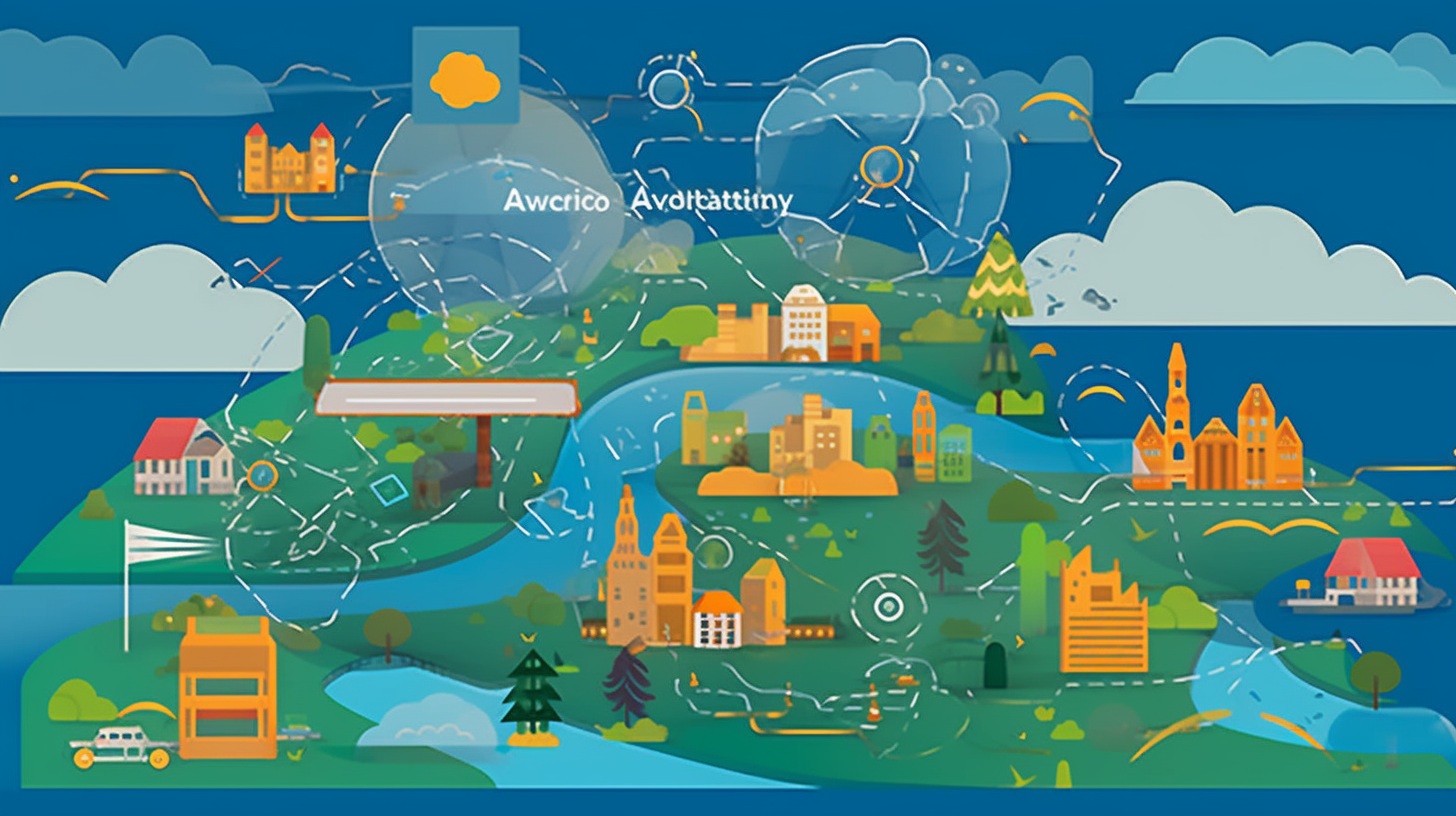Cloud Gazing 101: Decoding the Fundamentals of AWS Cloud Architecture Design Principles

Getting your head wrapped around the mind-boggling world of Cloud Computing might seem like an uphill battle, akin to boiling the ocean. But, if you keep your eye on the ball and tango with the right dance steps, cracking the AWS Certified Cloud Practitioner (CLF-C01) exam is no different than pushing at an open door. So, without further ado, let's dive into the deep end and unearth the fundamentals of AWS’s cloud architecture design principles.
Design for failure – A New Take on Murphy’s Law
Hold on to your hat, because we are starting our adventure with possibly the most philosophical of the lot – Design for failure. Think of it as the digital avatar of the famed Murphy’s Law – “Anything that can go wrong, will go wrong”. Instead of being all doom and gloom about it, the folks at AWS took this pessimistic worldview, gave it a facelift, and turned it into a guiding principle. Brace yourselves for this cloud revelation: in AWS Cloud Architecture, if you design assuming that your system may fail, the irony is that it becomes more resilient.
By weaving in redundancies, auto-scaling, and leveraging multi-Availability Zones (AZ), AWS ensures that even if one cog in the machine breaks down, the whole system doesn't go belly up. Points to remember: spare a dime to keep your applications replicated across multiple AZs, make back-ups your new best friend, and don’t skimp on testing your failure scenarios. And just like that, you have turned Murphy's Law on its head!
Decouple Components versus Monolithic Architecture - The Cloud Saga Continues
Have you ever tried to bite off more than you could chew? If yes, then you certainly understand the predicament of Monolithic architecture. Picture this: an enormous lasagna where all the layers and ingredients are squashed together. Great to taste, but oh boy, what a disaster to disentangle if you want just the cheese out of it. Same goes for monolithic architecture - a single, gargantuan system where every change sends ripples across the entire system.
The solution? Decoupling! Like having your cheese, pasta, and meatballs in separate bowls. In the AWS Cloud world, breaking down the architecture into separate components means changes, updates, or failures in one part don't send the whole system scuttling for cover. The components communicate via APIs, leading to more resilience, quicker updates, and lower blast radius - meaning lesser egg on your face when things go south.
A Funny Tidbit about Implementing Elasticity in the Cloud versus On-premises
Ponder for a moment about the Incredible Hulk. Mild mannered, Bruce Banner turns into the incredible, green beast when the need arises, but turns back into his normal self when the danger subsides. Now, if Hulk lived in an on-premises world (and somehow managed to control his rage smashes), he'd be lumbering around as the Hulk all the time, munching through resources and causing major mayhem even when there's no nemesis in sight.
Enter the Cloud, and it's a whole different scenario! Hulk can now scale up (or 'Hulkify'), flexing his muscles when the need arises and then gracefully scale down (or 'Bannerify') when it all calms down. Can you visualize that? AWS's Elasticity is like Hulk's pants - stretches when needed and shrinks back to normal size eventually, saving you a pretty penny and a world of trouble.
Two Words – Think Parallel.
Last but not least, let's zoom into the principle of 'Think Parallel'. It's not asking you to juggle multiple tasks on your Monday morning, but rather how to divvy up your workload to get things done more efficiently. In the on-premises world, it's like planning to bake cookies one at a time versus in AWS, where you fire up multiple ovens and get all your cookie batches done in one go, making you the true cookie monster of efficiency.
In essence, the 'Think Parallel' principle encourages leveraging the distributed environment of AWS to process multiple tasks concurrently. With features like Elastic MapReduce and AWS Lamba, it’s a cinch to slice and dice your job into smaller tasks and let the AWS gnomes handle them in parallel. Result? A quicker turnaround and perhaps, time to enjoy those cookies!
Alrighty then! That's the long and short of AWS’s Major Cloud Architecture Design Principles. As you journey towards conquering the AWS Certified Cloud Practitioner (CLF-C01) exam, remember, it's not as much about running for the hills as it is about conquering them. Keep in mind that failure isn't to be feared but planned for, love your components like well-behaved kids who do their own thing, and remember - when elasticity is your superpower, you can have your cake (or cookie) and eat it too! And yes, always think parallel - because two (or more) heads are always better than one. Good luck, future cloud gurus!